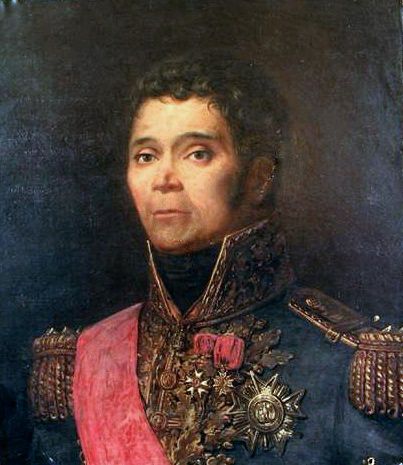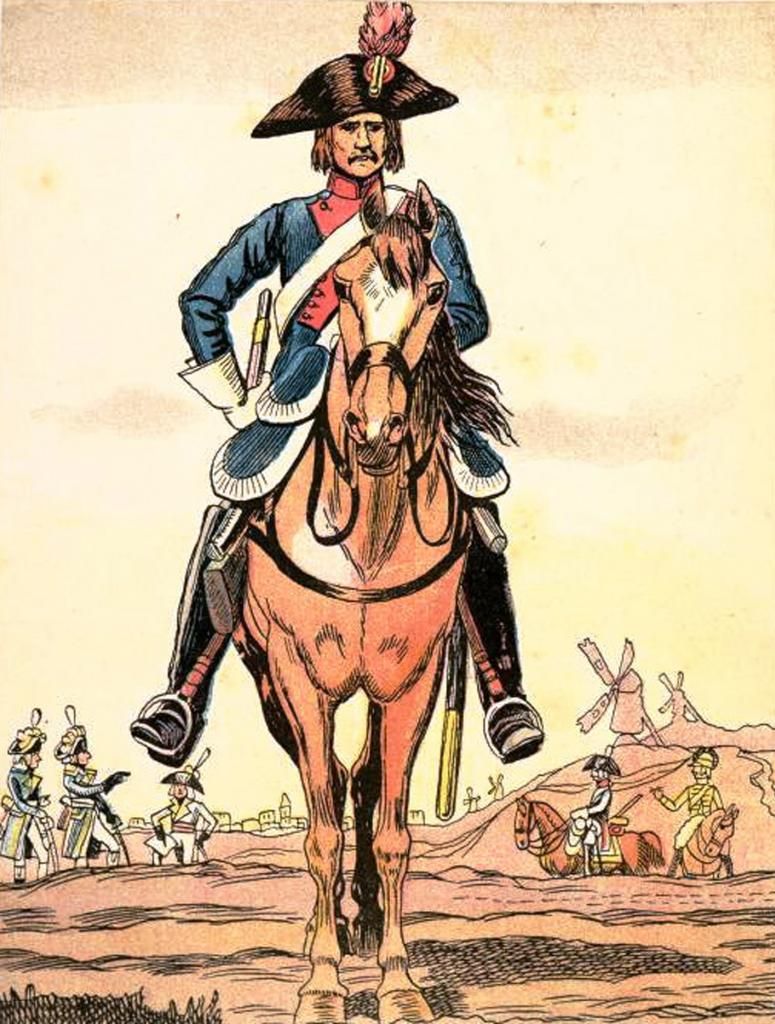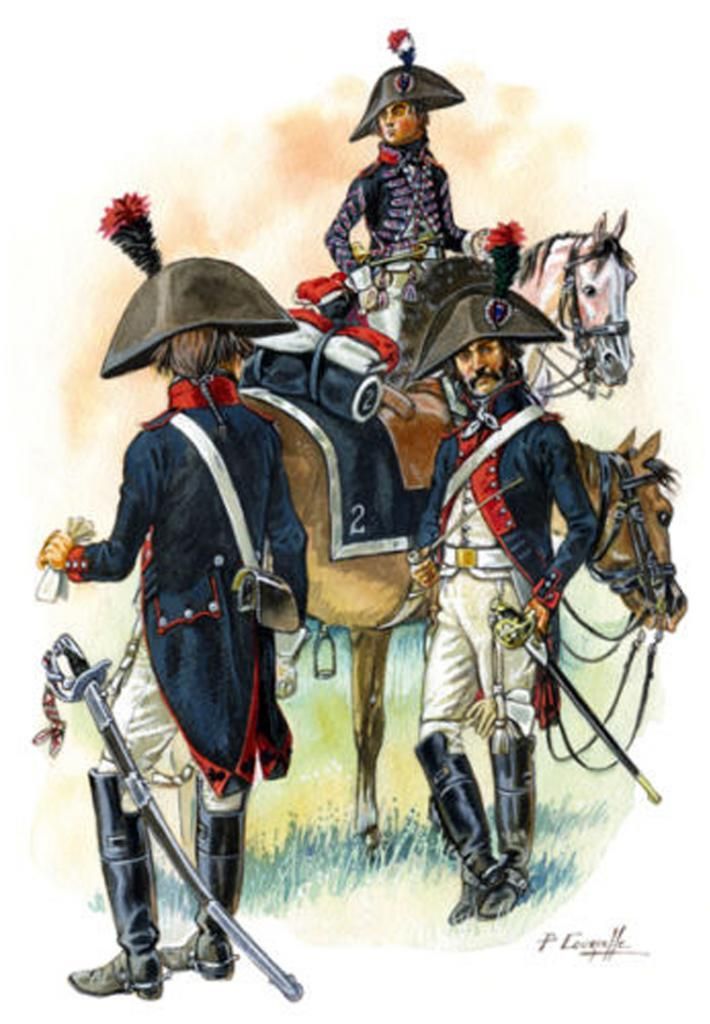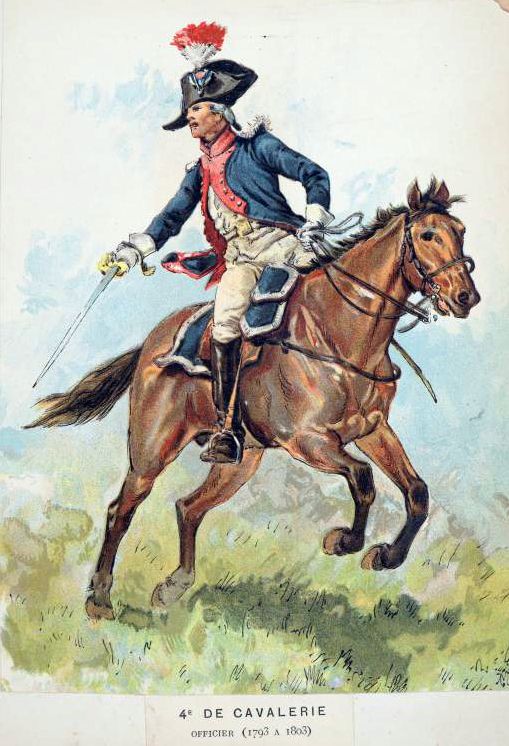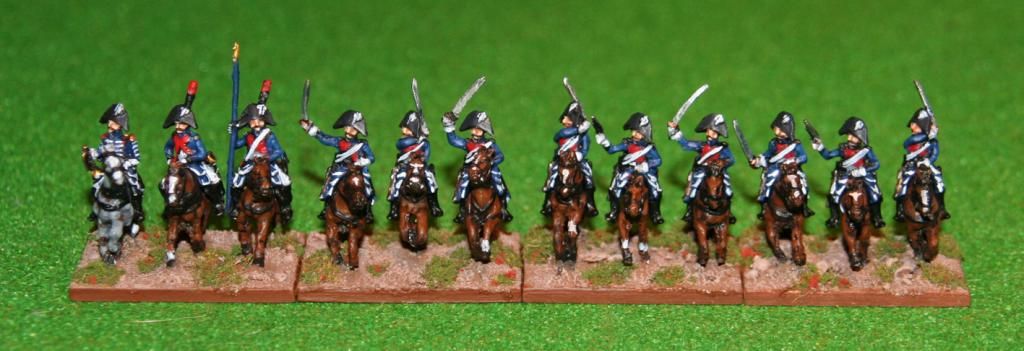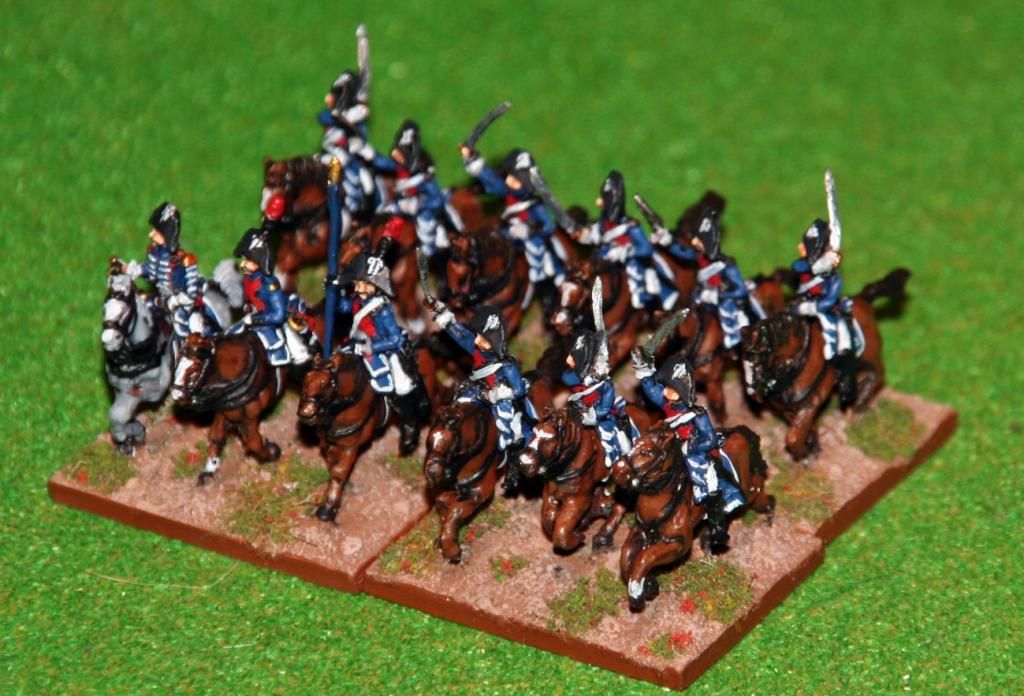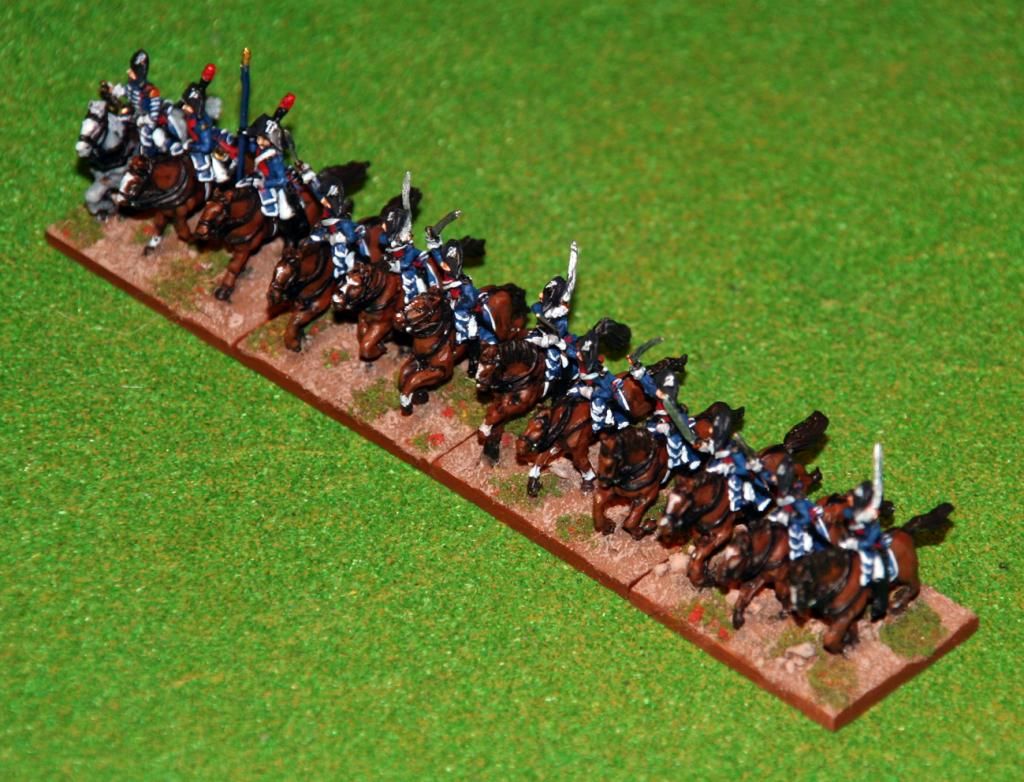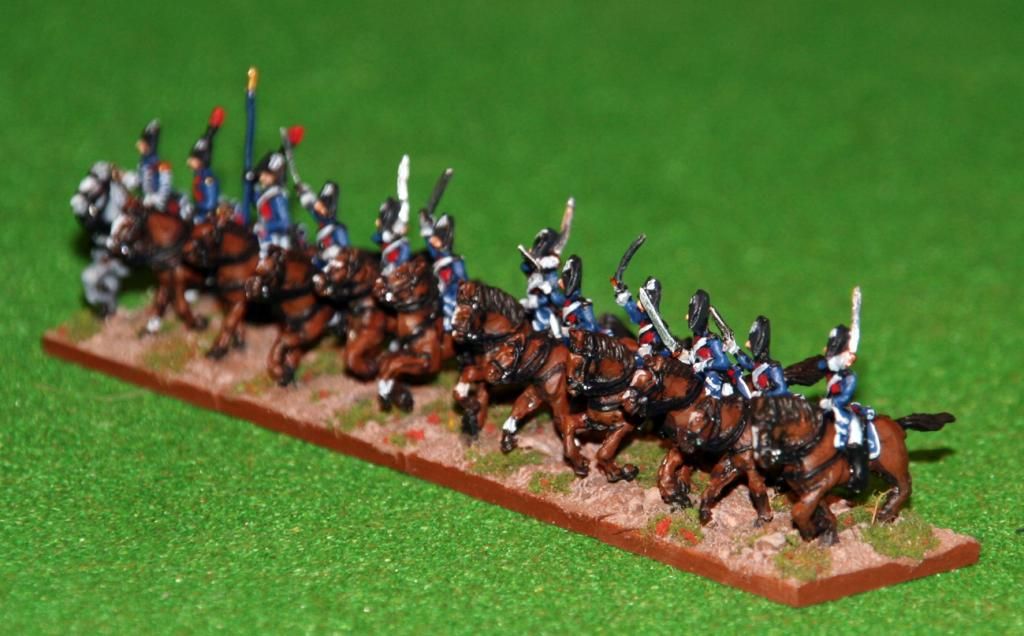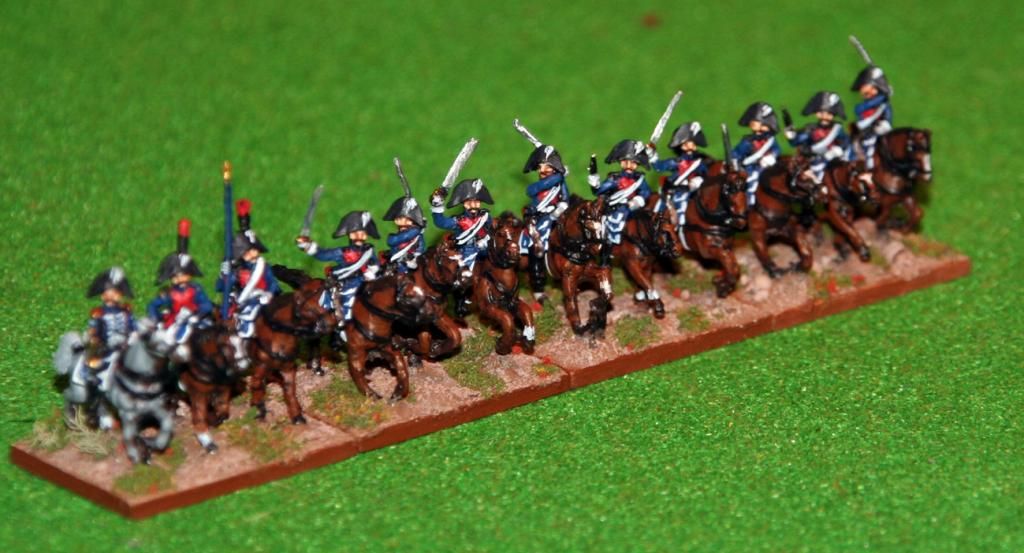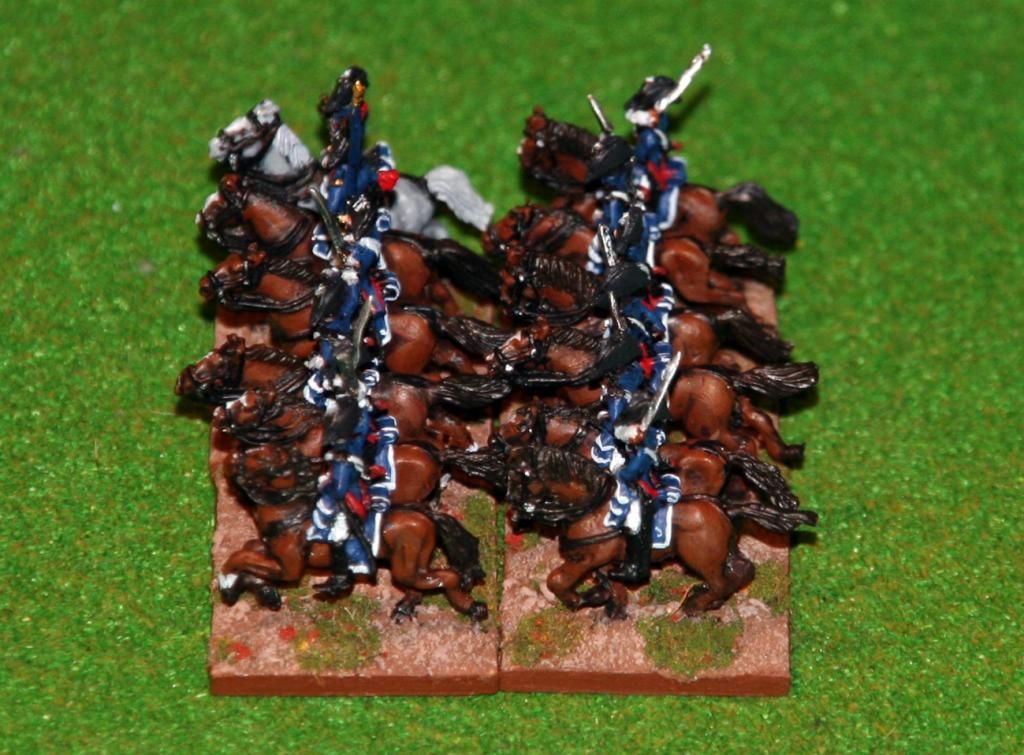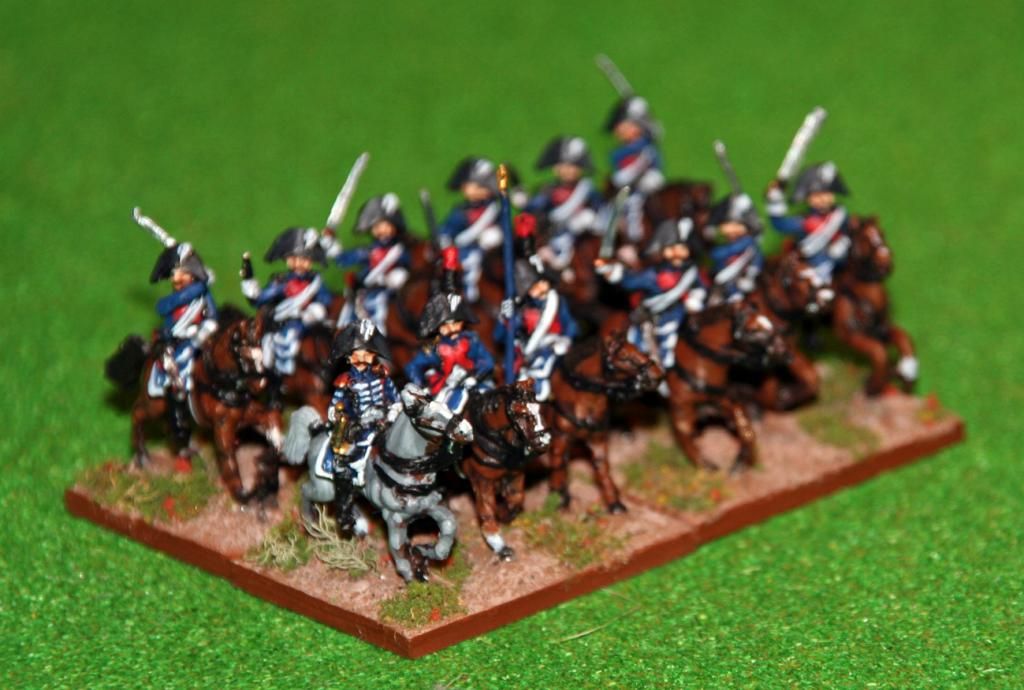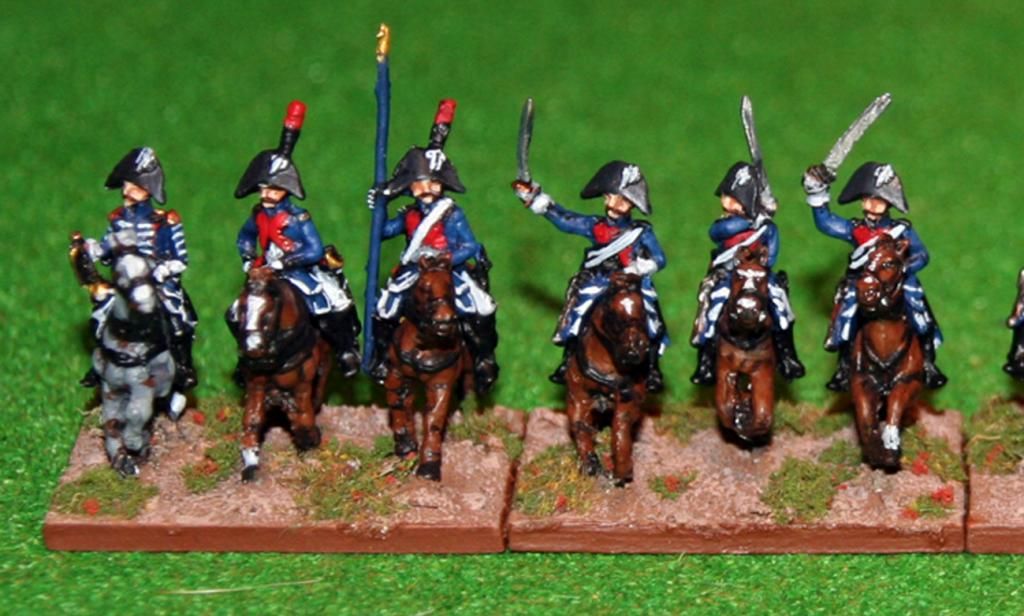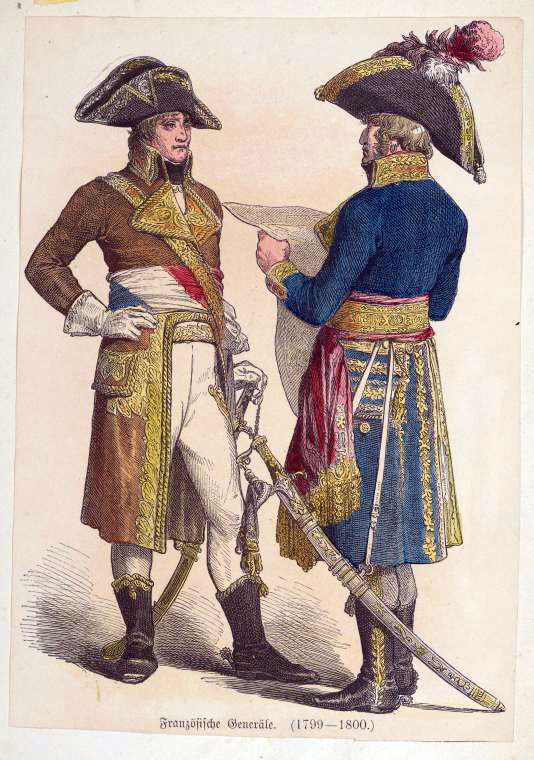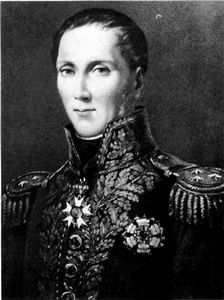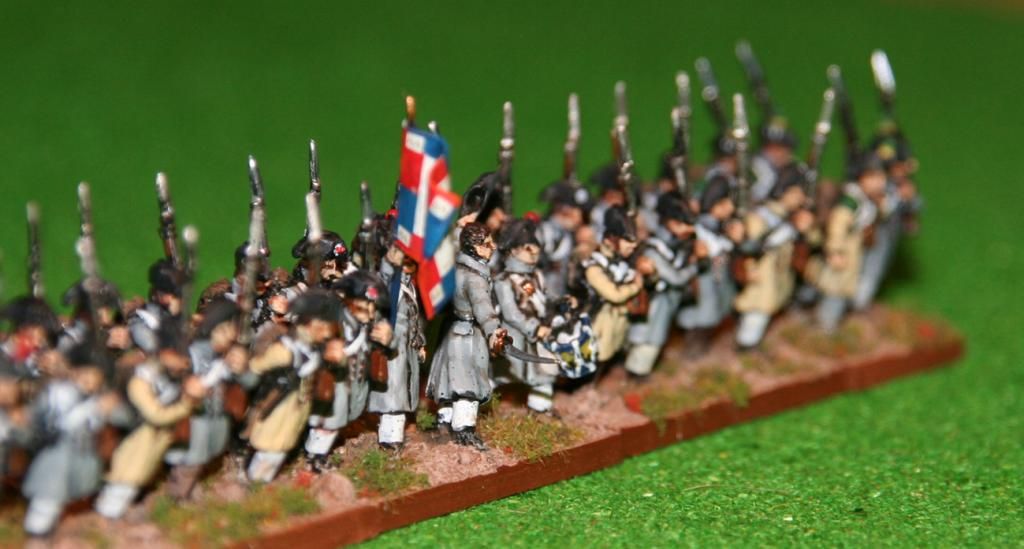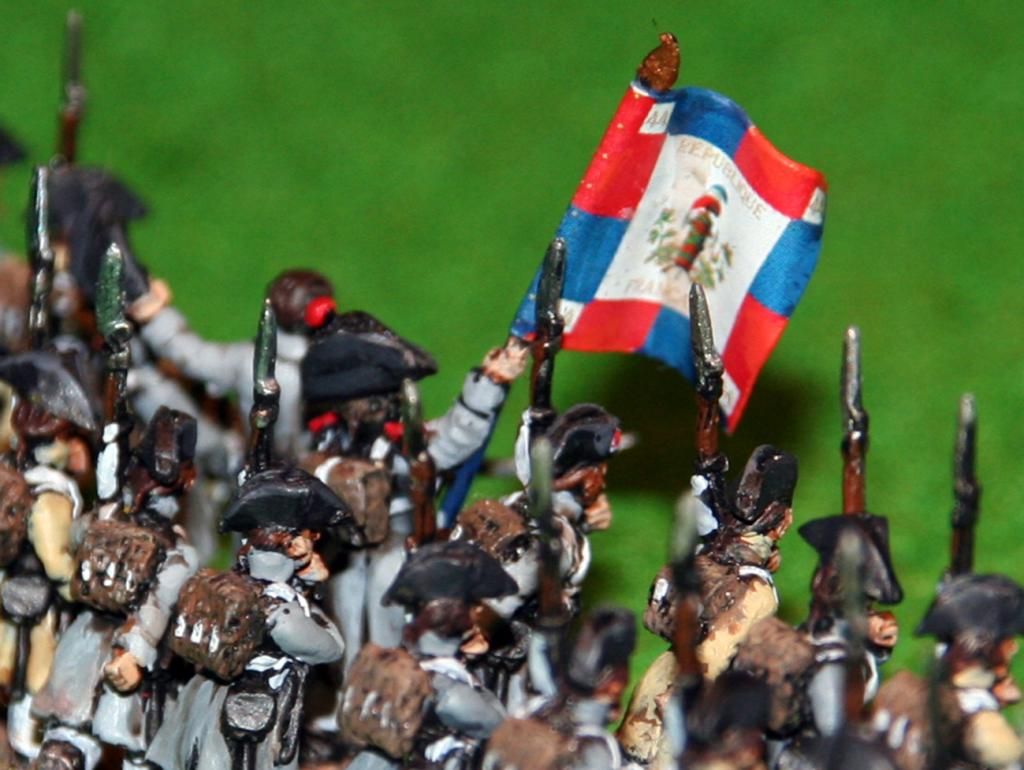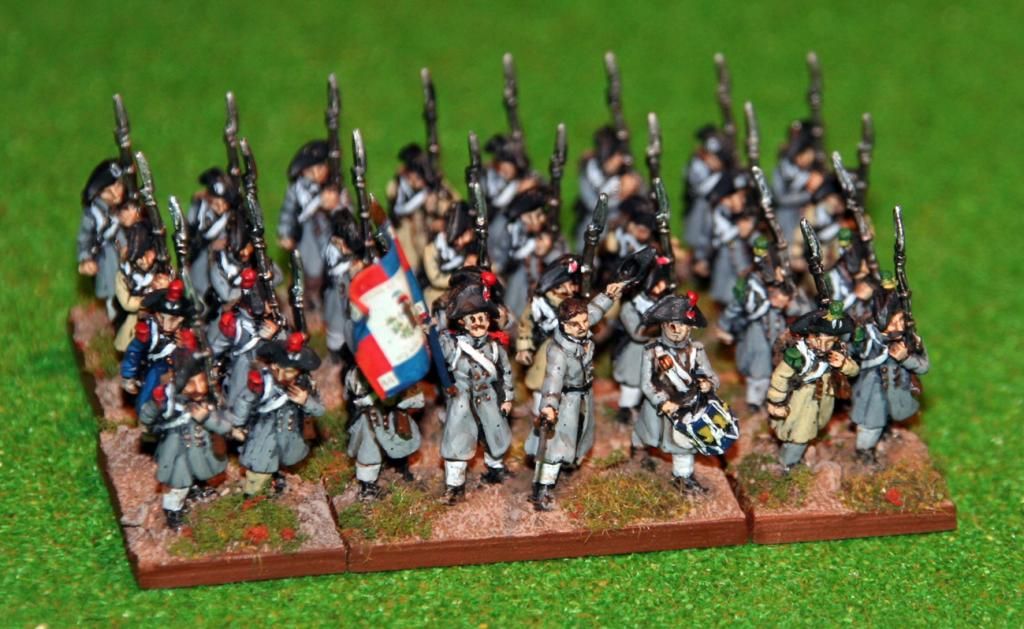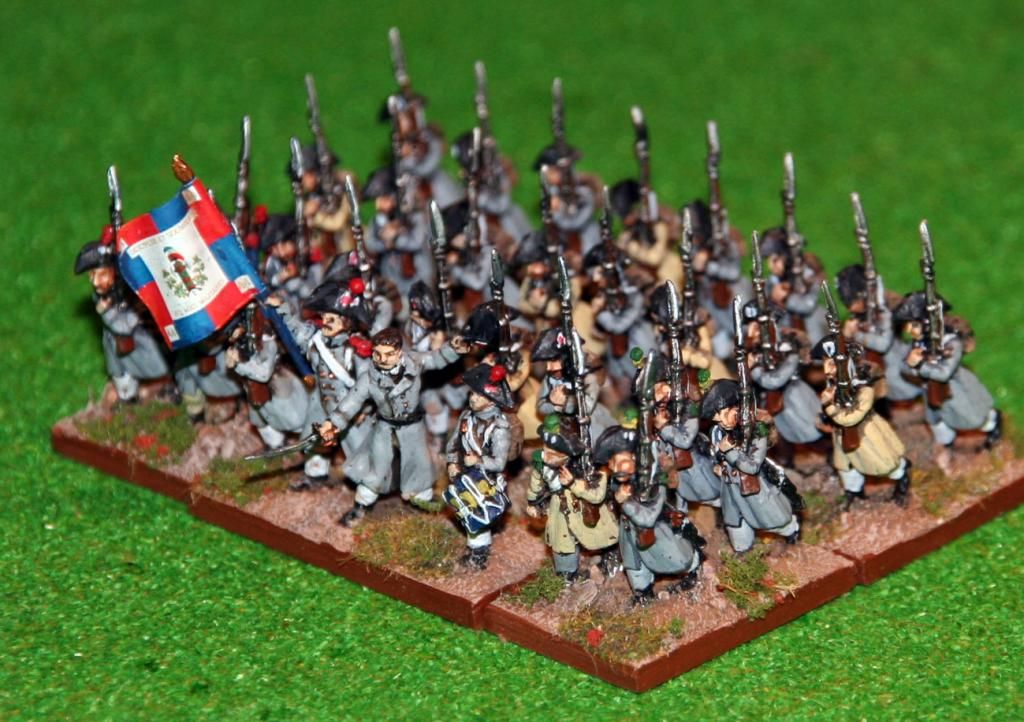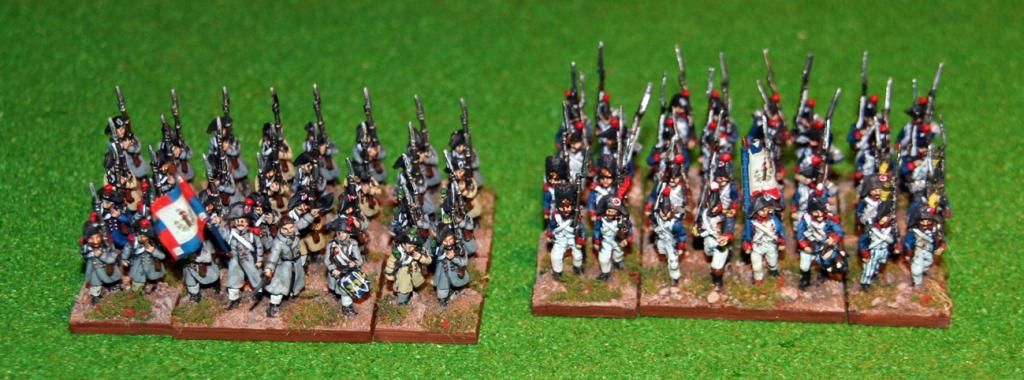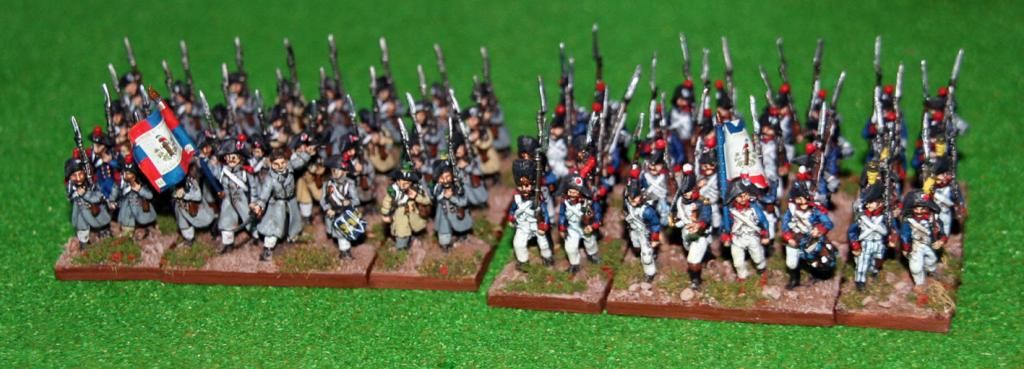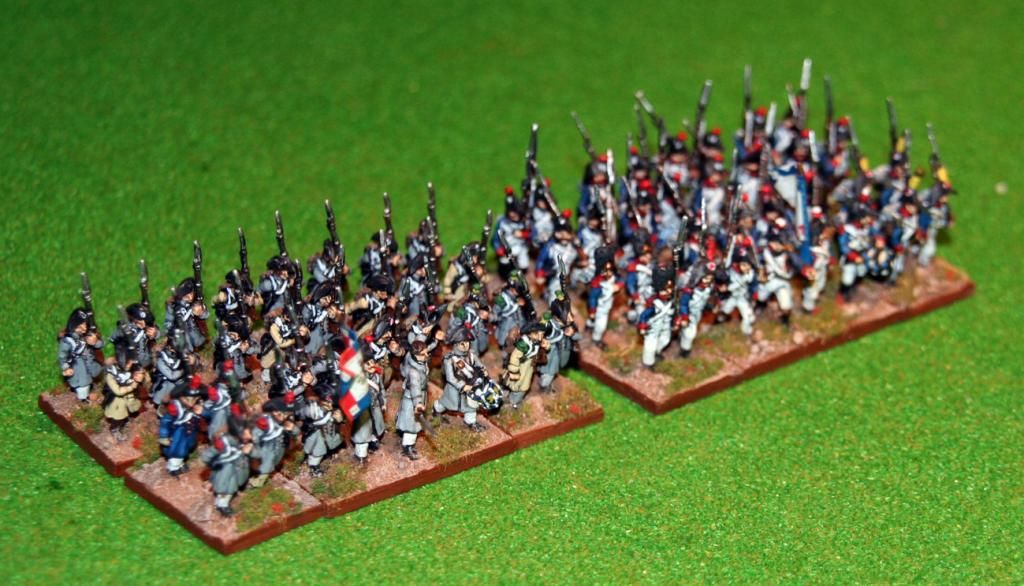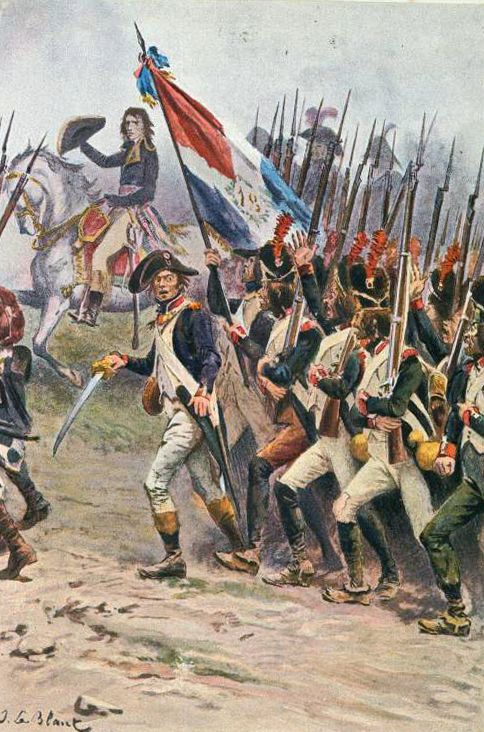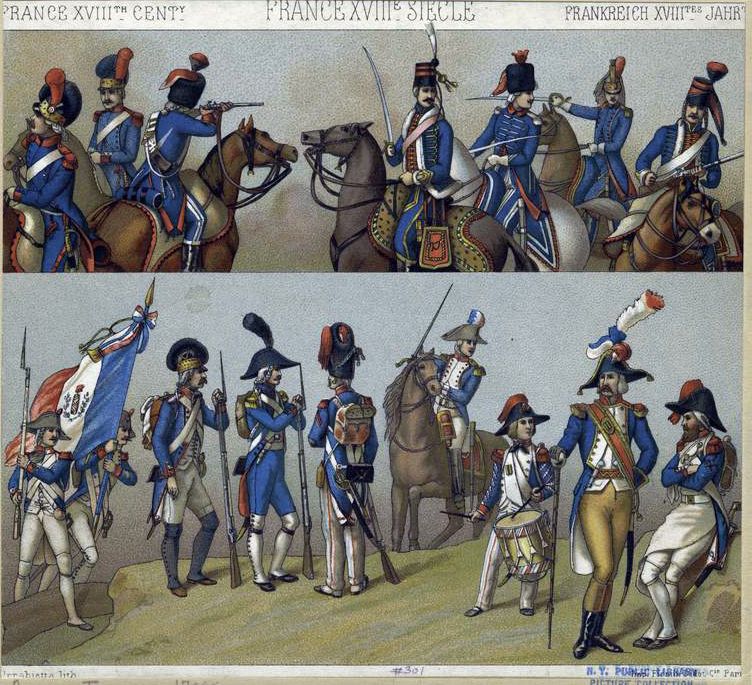In the latter part of Bonaparte's 1796-97 Italian campaign he attracted the future emperor's attention at Tagliamento. He was made general of brigade and continued in Italy in the armies of Rome and Naples under Macdonald and Championnet.
At the Marengo he commanded a heavy cavalry brigade with which he conducted one of the most famous cavalry charges of history, which, with Desaix's infantry attack, decided the issue of the battle defeating three Austrian grenadier battalions. Then rapidly reforming his troopers, charged and routed an Austrian dragoon regiment. The dragoons stampeded through the Austrian army, causing a general rout that effectively ended the Austrian's battle.
Kellerman's Brigade
2e Heavy Cavalry 12 Figures. Grade: Line
20e Heavy Cavalry 12 Figures. Grade: Line21e Heavy Cavalry 12 Figures. Grade: Line
The 2nd Heavy Cavalry
Putting together a unit of French Heavy Cavalry for Marengo was not as easy as I first thought. There is a very limited choice of figures with virtually none available that I felt would fit in with what I already had. Plus with cost constraints meaning I had limited funds to spend. First of all I had to do a little research on what the Heavy Cavalry looked like at this battle. There were a few contradictory images online and in book reference, but here are some that I used as reference for painting this unit.
As I really want to concentrate on my Austrian army I didn't want to spend too much time and money on these, but I also wanted something that would be of similar quality to my other units. I had a few suggestions from the TMP Napoleonic forum which included using Spanish troops as my French, and with a lot of help from Mike at Warmodelling UK, I have managed to put together two units of twelve cavalrymen each using their Spanish Cavalry range, all at a very cheap price. Unfortunately Mike is no longer supplying Warmodelling miniatures so the next and final unit will have to be ordered from Spain.
The figures themselves are reasonably good, but with the slight roughness that lower the quality of Warmodelling's figures, and some of the horses didn't look like they were from the same sculptor. Also a couple of the figures are holding pistols (I may change these if I can get more sword-bearing spares).
I've painted these a little quicker than they deserve, but with increasing arthritis pain in my hands, and decreasing eye-sight quality, they were a bit of a struggle. I also hate painting horses for some reason, and this is probably the very first mounted unit I've completed.
The flags still need to be done, with new artwork needed, and then a visit to the printers.
I hope you like them. And comments as to whether these work as Heavy French Cavalry or not are welcome...
I also found this very nice image of French Generals suitable for this period...

